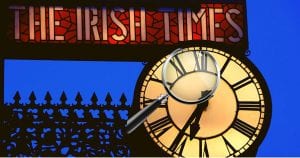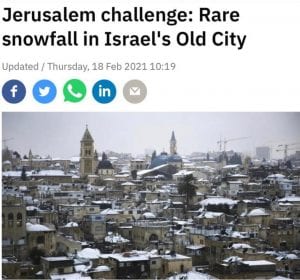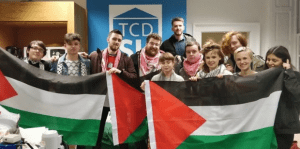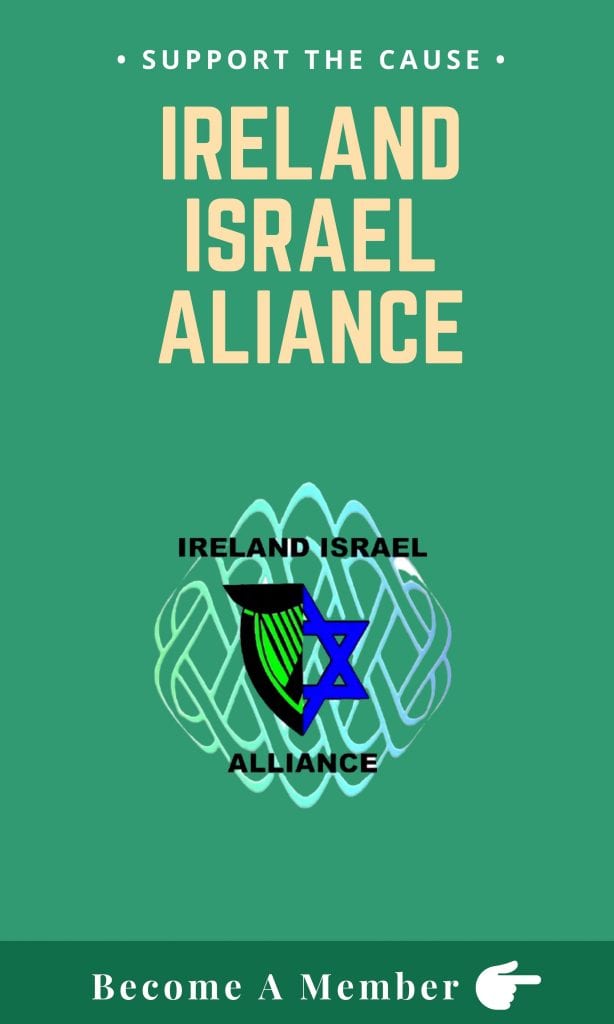Introduction
The hostility of Irish media to Israel over the past 25 years, with a few exceptions, is too well known to need retelling. The absence of a diversity of media viewpoints, the tendency of news outlets to take anti-Israel propaganda at face value rather than impartially present two conflicting narratives, along with the rise to prominence of a party formerly the political wing of a terrorist movement that aided, and was aided by, Palestinian and other Arab terrorist groups, all combine to deny the Jewish state a fair hearing in the Republic.
It wasn’t always like this. Fifty-five years ago, at the time of the 1967 crisis and Israel’s stunning victory in the Six Day War, Israel received a warm and supportive coverage inconceivable today. But that is a topic for another day. This article will explore instead how Irish newspapers (then the only significant mass media) reported and commented on the birth of the modern Israeli state in 1947-48.
The newspapers
Seventy-five years ago, the three principal Irish national daily papers were the Irish Independent, the Irish Press and The Irish Times. A word should be said about each of these before discussing their Israel coverage.

The Independent and the Press both belonged to the Catholic nationalist tradition but were divided by their political sympathies. The former had supported the Anglo-Irish Treaty of 1921, the institutions of the Free State that had grown from it and the pro-Treaty political party that had governed the Free State for its first ten years, now called Fine Gael.
The latter paper had been founded in the late 1920s by Eamon De Valera, whose rejection of the Treaty had led to the civil war of 1922-23. Defeated, he had founded the Fianna Fáil party in 1926 to oppose the Treaty by political means. That party had governed the Free State (‘Éire’) from 1932 to 1948, gradually making the country a republic in all but name, a status underlined by its (officially) neutral stance in World War Two.
The Irish Times was the paper of the small formerly unionist, mostly Protestant, minority in southern Ireland that had accommodated itself to independence despite having opposed the break with the United Kingdom.
All three newspapers derived almost all their international news reports from the three principal agencies of the time – Associated Press (AP), United Press (UP) and Reuters. In an age before campaigning journalism, news headlines mostly embodied objective facts.
The UN General Assembly vote, 29 November 1947
The most striking feature of the Middle East coverage of all three newspapers, in the weeks leading up to the UN General Assembly vote on Resolution 181 that would partition Mandate Palestine into Jewish and Arab states, was their reporting of the threats of violence by the Arab side – a history that has since been rewritten by anti-Israel propagandists to make it seem that Zionists initiated the strife.
On 9 September, the Irish Press reported Saudi Arabia’s Emir Faisal’s avowal as he passed through Shannon Airport: “Not a single Jew will be allowed to migrate to Palestine. Any attempt to impose a solution contrary to the Arabs’ birthright will only lead to trouble, bloodshed and probably a third world war.” (Jewish mass migration to Palestine had been taking place for almost 70 years, under the imperial Ottoman and later British Mandate authorities.) As the day of the vote approached, The Irish Times of 25 November carried the front page headline ‘Bloodshed Warning by Arabs’: ‘A warning that any partition would spill the blood of Jews, not only in Palestine but in other Arab countries, was made by the Egyptian delegate, Mohammed Hussein Hevkal Pasha, at Lake Success yesterday, speaking in the UN Palestine Committee: “Once bloodshed begins, no power on earth can confine it to Palestine… If you decide on partition now, you will ignite the flame of racial war.”’
On 29 November, the vote on Resolution 181 was carried by 33 votes to 13 with 10 abstentions and one absentee. Immediately the Arab threats were put into effect. Headlines told the story: ‘War is Inevitable, Arabs Declare: Jews Die in Wave of Violence’; ‘Jews Welcome Decision’; ‘Jews Celebrate in Dublin’ (Irish Independent, 1 December); ‘Palestine Arabs’ Violent Protest’, ‘Azzam Pasha [Secretary-General of the Arab League]: “the decision will set fire to the Near East”’, with photo captioned ‘Jews in Tel Aviv cheer the news of the establishment of a separate Jewish state in Palestine’ (Irish Press, 1 December).
Rising Violence
As the violence increased, The Irish Times headlined: ‘“Our Swords Shall Do the Talking,” Mufti [of Jerusalem, Haj Amin al-Husseini] Declares in Cairo’ (9 December); ‘[Arab Higher Executive Secretary] Hussein Khalidi Warns: “Arabs Mean War” – the Arab world is “determined to resist the partition of Palestine and will oppose the formation of a Jewish state”’ (10 December). The Independent headlined its ‘World Spotlight’ feature on the Mufti ‘The Man Behind the Arab War in Palestine’ (15 January). On 1 January 1948, that paper had given Reuters’ toll for the month of December as 450 dead with about 1,000 wounded.
It was clear that Jews were fighting back, as evidenced by the rising ratio of Arab to Jewish deaths as the weeks went on. Jewish resistance was carried on by the mainstream Zionist defence force, Haganah, and by the two breakaway Zionist groups, Irgun and Lehi, which also waged terrorist war against British forces and their enforcement of the restrictive 1939 British immigration policy. (Irgun had made world headlines in July 1946 by blowing up a wing of the King David Hotel in Jerusalem, killing 91 soldiers and civilians, British, Arab, and Jewish, an action denounced by the Jewish National Council.)
A sample of three headlines from The Irish Times indicates the intensity of the conflict: ‘Mourners Shelter Behind Tombs [at Mount of Olives cemetery] as Arabs Open Fire’ [at funeral of a Jewish man killed two nights earlier] (24 December); ‘Bomb Kills 13 in Arab Bus Queue’ [a barrel bomb thrown from a taxi by the Irgun into a bus queue at the crowded Damascus Gate market, also killing two British policemen] (30 December); ‘41 Jews Dead in Palestine’s Worst Rioting’ [at the Haifa oil refinery] (31 December).
Editorial comment
The three Irish newspapers differed sharply in their editorial commentary on events in Palestine. The Independent carried one editorial deploring the partition of Palestine, which it called ‘indefensible on any argument of race or geography, and calamitous in its inevitable consequences’ (31 December) and wrote of ‘a competition in murder and savagery between Jews and Arabs’ (12 March 1948).
However, the paper’s main concern was with the ‘Holy Places’ in Palestine – meaning exclusively those associated with the birth of Christianity. It criticised the Balfour Declaration because ‘Palestine belongs to neither Jews nor Arabs’; it should have recognised ‘the claims of Christendom to have Palestine preserved as an international shrine… a neutralised international State preserved as the Holy Place of Christendom’ (12 March 1948). The following Christmas, in an editorial titled ‘The Road to Bethlehem’, it lamented: ‘For the first time since Saladin conquered Jerusalem in 1187, Christian pilgrims to Bethlehem will not be able to follow the historic route of pilgrimage. Only about one hundred Christians will make the pilgrimage, following a route prescribed by the political and military circumstances of the present’ (24 December 1948).
Altogether, of eleven editorials on the conflict over 14 months, seven were chiefly concerned with the ‘Holy Places’ as the ‘cradle of Christianity’. No concern whatever was expressed for the 3,000-year-old Jewish religious heritage in Jerusalem, nor any recognition that Jews had formed a majority of the population in the Old City since the mid-1800s.
This approach accorded perfectly with Catholic establishment thinking in Ireland as well as that of the Vatican. (Ireland’s democracy from the 1920s to the 1970s was heavily permeated with theocratic influences, traditional antisemitism being among the ingredients. It is significant that Ireland’s decision to open diplomatic relations with Israel had to wait until 1993, after the Vatican itself had paved the way.)
For the Irish Press, by contrast, as the inheritor of a dissident civil war tradition that retained a faint whiff of anti-clericalism, the chief worry was not religious sites, but partition… partition anywhere, under any circumstances. Of six editorials published over twelve months, all six dwelt on this theme. The ‘evil’ of partitioning Palestine was compared to the calamity of the partitions of India and, of course, Ireland. The paper even sent a staffer to Berlin to report on life in a ‘partitioned city’.
On 22 March 1948, under the title ‘Partition No Solution’, it wrote: ‘Partition in Palestine, as in Ireland, had its foundation in a trick. British statesmen made contradictory promises to Jews and Arabs in Palestine and to Nationalists and Orangemen in Ireland. To keep the promises made to one side meant that the other side was to be betrayed.’ (These editorials were not unconnected with the fact that its founder and hero De Valera, having lost power in the general election of February, was embarking in March 1948 on the first stage of his Anti-Partition World Tour, to last until 1951 – a futile effort to pressurise Great Britain into returning Ireland’s ‘fourth green field’.)
Finally, The Irish Times, whose news coverage was probably the best of the three but which carried little editorial comment and made no parallels with Irish affairs, aligned itself with majority pro-Arab British thinking of the time: ‘[The UNGA partition decision] was a direct blow in the face not merely of the Palestinian Arabs, but of all the Moslem states of the Middle East. The inevitable result has been what amounts to an Arab revolt.’ (10 January 1948).
(to be continued)
By Dermot Meleady




